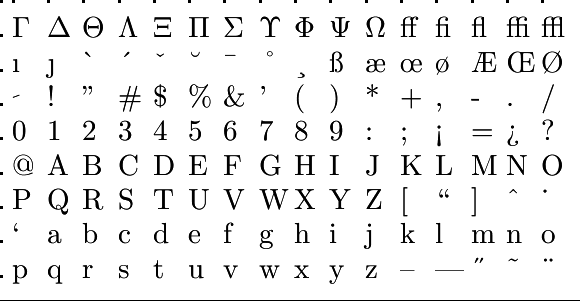Systems of linear equations: Two equations with two unknowns
 Solving systems of linear equations by substitution
Solving systems of linear equations by substitution
The solution of a system corresponds to the intersection point of the lines which represent the two linear equations.
Graphic
|
Procedure |
Example | |
|
When solving a system of two linear equations with two unknowns using the substitution method, we use the following procedure. |
Solve the following system: #\left\{\begin{array}{rcl}2 x +4 y+5&=& 0 \\ -3 x +2 y -4&=& 0 \end{array} \right.# |
|
| Step 1 |
In the first equation, express #x# in #y# by reduction. In other words, write the first equation in the form #x=\ldots#. |
#\left\{\begin{array}{c}x=-2 y-\frac{5}{2} \\-3 x +2 y -4=0 \end{array} \right.# |
| Step 2 |
Substitute the obtained expression for #x# in the second equation, such that the second equation only contains unknown #y#. |
#\left\{\begin{array}{c}x=-2 y-\frac{5}{2} \\-3 \cdot \left(-2 y - \frac{5}{2}\right) +2 y -4=0 \end{array} \right.# |
| Step 3 |
Solve the equation from step 2 for #y#. |
#\begin{array}{rcl}-3 \cdot \left(-2 y - \frac{5}{2}\right) +2 y -4&=&0 \\6 y+\frac{15}{2} +2 y -4&=&0 \\8 y + \frac{7}{2}&=&0 \\8 y &=&-\frac{7}{2}\\y &=&-\frac{7}{16} \end{array}# |
| Step 4 |
Determine #x# using the first equation from step 1 by substituting the value for #y# found in step 3. |
#\begin{array}{rcl} |
| Step 5 |
Give the answer in the form \[\lineqs{ x & =\;\; \ldots \\ y &=\;\; \ldots }\] |
#\left\{\begin{array}{rcl}x &=&-\frac{13}{8} \\ y &=&-\frac{7}{16} \end{array}\right.# |
#\lineqs{x&=&\displaystyle-{{3}\over{2}}\cr y&=&\displaystyle{{5}\over{18}}\cr }#
| Step 1 | We reduce the first equation to the form #x=\ldots#. We find: \[\lineqs{x&=&-9\cdot y+1\cr 7\cdot x+9\cdot y&=&-8\cr }\] |
| Step 2 | We replace the first equation in the second one. We find: \[\lineqs{x&=&-9\cdot y+1\cr 7\cdot\left(-9\cdot y+1\right)+9\cdot y&=&-8\cr }\] |
| Step 3 | With help of expanding the brackets, simplification and reduction, we can solve the second equation for unknown #y#. This is done in the following way: \[\begin{array}{rcl}&\lineqs{x&=&-9\cdot y+1\cr 7\cdot\left(-9\cdot y+1\right)+9\cdot y&=&-8\cr }& \\&&\phantom{xxx}\blue{\text{the system we need to solve}} \\ &\lineqs{x&=&-9\cdot y+1\cr -63\cdot y+7+9\cdot y&=&-8\cr }& \\&&\phantom{xxx}\blue{\text{brackets expanded}} \\ &\lineqs{x&=&-9\cdot y+1\cr 7-54\cdot y&=&-8\cr }& \\&&\phantom{xxx}\blue{\text{simplified}} \\ &\lineqs{x&=&-9\cdot y+1\cr -54\cdot y&=&-15\cr }& \\&&\phantom{xxx}\blue{\text{both sides of the second equation minus }7} \\ &\lineqs{x&=&-9\cdot y+1\cr y&=& \displaystyle {{5}\over{18}}\cr }& \\ &&\phantom{xxx}\blue{\text{both sides of the second equation divided by }-54} \end{array}\] Hence, the #y#-value of the solution is #y=\displaystyle{{5}\over{18}}#. |
| Step 4 | We now determine #x# by substituting #y={{5}\over{18}}# in the first equation. This is done in the following way: \[\begin{array}{rcl}&\lineqs{x&=&\displaystyle -9\cdot {{5}\over{18}}+1\cr y&=&\displaystyle{{5}\over{18}}\cr }& \\ &&\phantom{xxx}\blue{y=\displaystyle {{5}\over{18}} \text{ substituted in the first equation}} \\ &\lineqs{x&=&\displaystyle-{{3}\over{2}}\cr y&=&\displaystyle{{5}\over{18}}\cr}\\ &&\phantom{xxx}\blue{\text{calculated}} \\ \end{array}\] |
Hence, the solution of the system is: \[\lineqs{x&=&\displaystyle-{{3}\over{2}}\cr y&=&\displaystyle{{5}\over{18}}\cr }\]

Or visit omptest.org if jou are taking an OMPT exam.



